The Economics and Statistics Division maintains archives of previous publications for accountability purposes, but makes no updates to keep these documents current with the latest data revisions from Statistics Canada. As a result, information in older documents may not be accurate. Please exercise caution when referring to older documents. For the latest information and historical data, please contact the individual listed to the right.
<--- Return to Archive
For additional information relating to this article, please contact:
January 22, 2021SURVEY OF HOUSEHOLD SPENDING, 2019 Statistics Canada has released the 2019 results of the Survey of Household Spending. This survey tracks average household spending by a number of categories of current consumption and other expenditures. The methodology and categories of the Survey of Household Spending have been changed and there are no data available for 2018. Data from 2017 and earlier surveys of household spending may not be comparable with current results.
In 2019, Nova Scotian households made an average of $59,763 in expenditures for current consumption. This was below the national average ($69,980), but above the other Atlantic Provinces as well as Quebec. Average household current consumption in 2019 was highest in Alberta and lowest in Prince Edward Island.

Including tax, insurance, pension, support payments and giving (which are not part of current consumption), Nova Scotia household expenditures averaged $81,229 in 2019. National household expenditures averaged $93,724 with the highest spending in Alberta and the lowest spending in Prince Edward Island.

The largest expenditure items in Nova Scotia were income taxes, shelter (including energy and insurance), transportation and food.
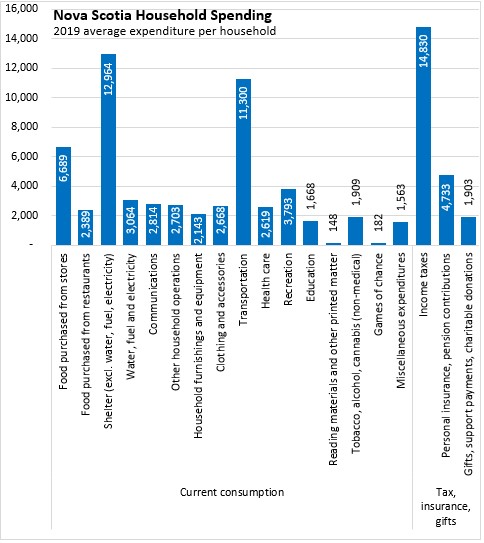
Nova Scotia had the lowest average purchases of food from stores in 2019 at $6,689. The largest components of food purchased from stores were beverages/other as well as meat.
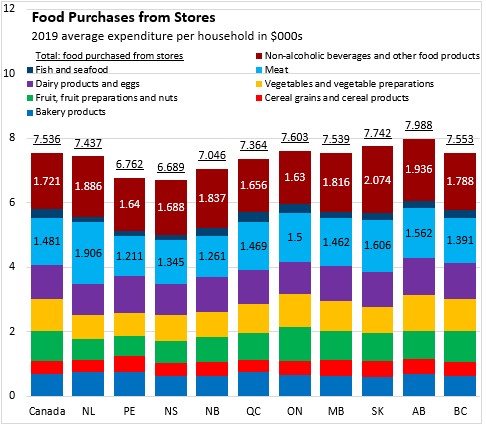
Nova Scotians purchased an average of $2,389 from restaurants in 2019, which was below the national average. The bulk of these purchases were for meals (as opposed to snacks and beverages).
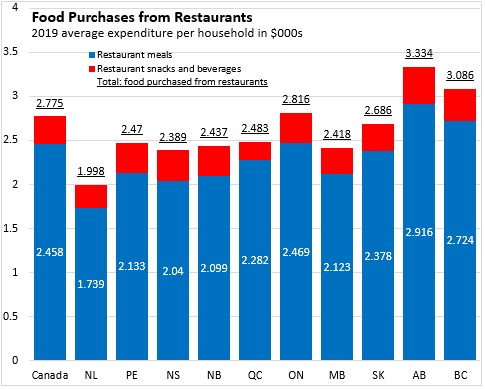
Shelter expenditures averaged $16,028 among Nova Scotia households in 2019. This was below the national average. Principal accommodations as well as electricity were the largest items in shelter expenditures.
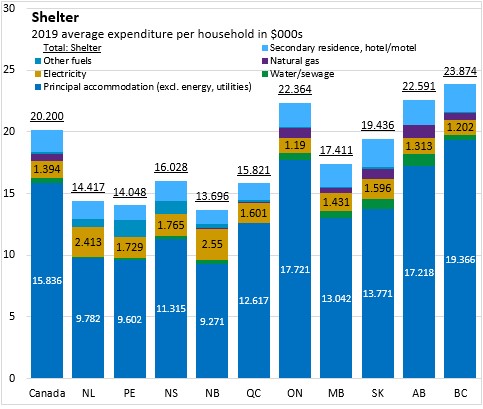
Household operation expenditures averaged $5,517 in Nova Scotia in 2019 - just above the national average. The largest items in household operations expenditures were cell phone service, internet service, pet expenses and child care.
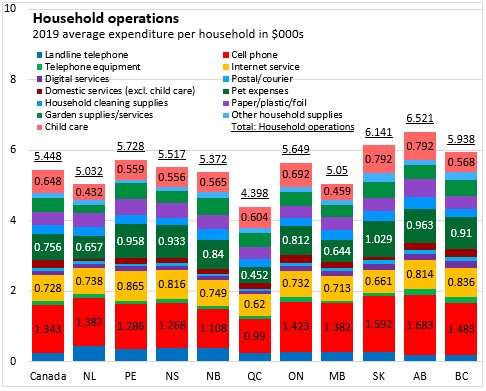
Household furnishing and equipment expenditures averaged $2,143 per household in Nova Scotia in 2019, below the national average.
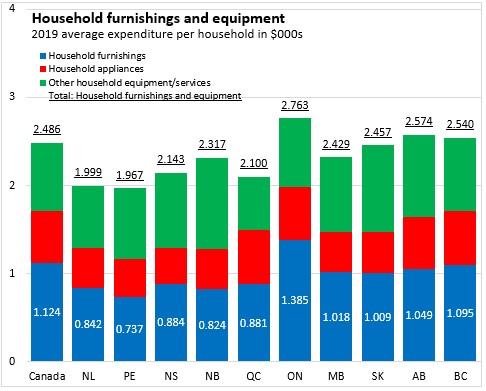
Nova Scotian households spent an average of $2,668 on clothing, footwear and accessories, which was less than the national average. Clothing was the largest component of this expenditure.
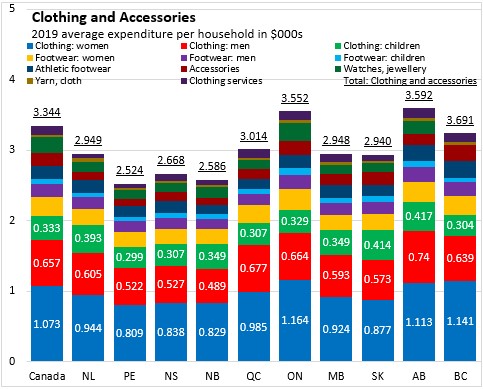
Nova Scotians' transportation expenditures averaged $11,300 per household in 2019, the second lowest among provinces (after Quebec). The largest components of transportation spending were vehicle purchase (including leasing), fuel, insurance/licenses/registration and maintenance/parking (including tires).

Nova Scotians' average household expenditures on health and personal care were $3,765 in 2019, which was below the national average. Health insurance was the largest component of this expenditure, followed by personal care goods, personal care services, prescription medicines and non-prescription medicines.
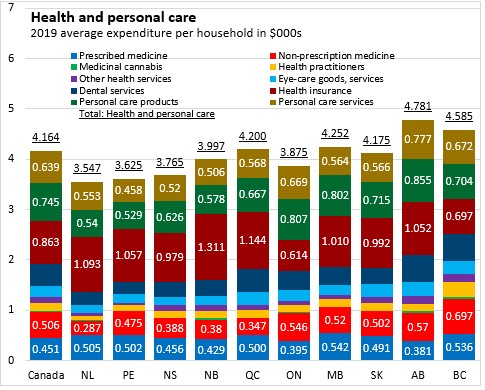
Average household expenditures on recreation were $3,793 in Nova Scotia - the second lowest in the country (after Prince Edward Island). The largest items of recreational expenditure were for: recreational equipment (which includes computers), recreational vehicles and associated services, television services, use of recreational facilities and package trips.
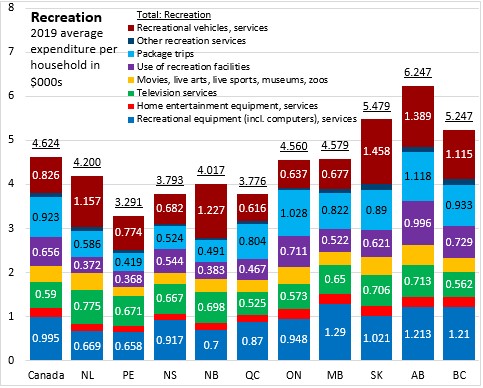
Nova Scotian households spent slightly less ($1,691) than the national average on education and reading materials. The bulk of these expenditures were on education, which includes tuition costs.
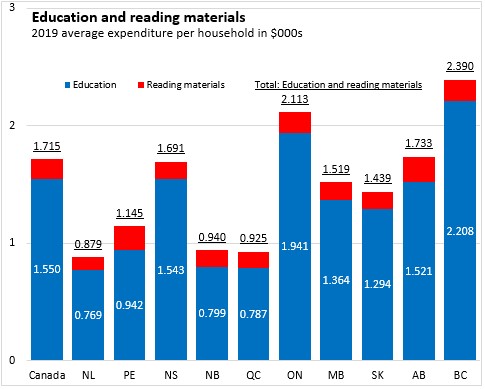
Average household expenditures on alcohol, tobacco, cannabis (non-medicinal) and gaming were $2,091 in 2019, which was above the national average. Although Nova Scotians spent less than the national average on alcohol, cannabis and games of chance, there were higher expenditures on tobacco products and supplies.
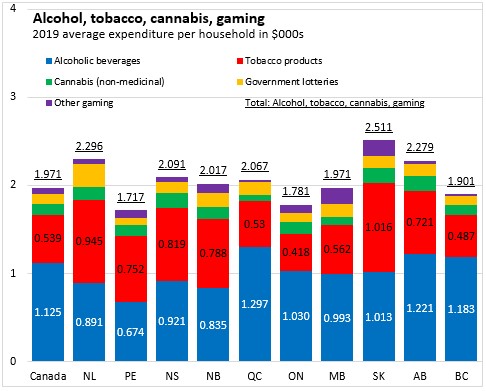
Nova Scotians spend less on average for financial services and other expenditures, compared to the national average in 2019.
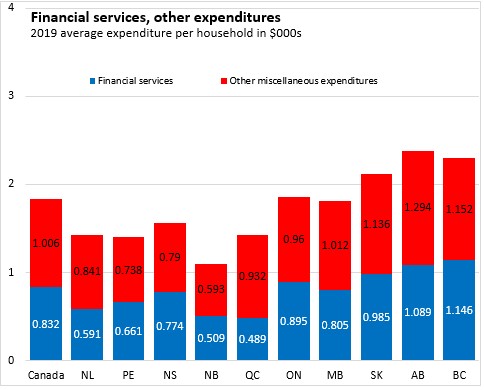
Nova Scotian households spent an average of $14,830 in income taxes in 2019, which was the third lowest in the country (after the other two Maritime provinces). Income taxes were highest in Alberta and lowest in Prince Edward Island.

Nova Scotians' average household expenditures on insurance, pensions, giving and child support were $6,636 in 2019, which was below the national average. Retirement/pension savings, gifts of money and charitable contributions were the largest parts of these expenditures.
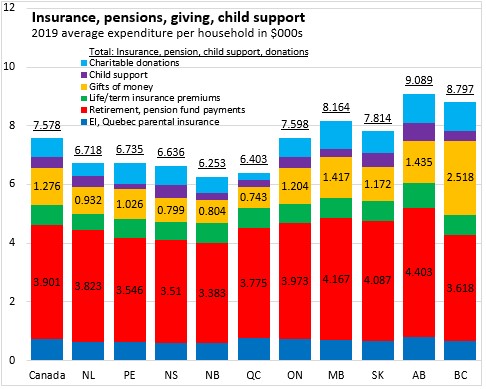
The data on average household expenditures can be broken out by income quintile. Households in the highest income quintile ($46,249) spent $45,806 more than those in the lowest quintile ($443) on income taxes. For shelter, households in the highest quintile ($24,531) spent $15,161 more than those in the lowest quintile ($9,370). For transportation, households in the highest quintile ($19,728) spent $13,683 more than those in the lowest quintile ($6,045). For pension and insurance payments, households in the highest quintile ($11,814) spent $11,365 more than those in the lowest quintile ($449). For food, households in the highest quintile ($13,555) spent $8,404 more than those in the lowest quintile ($5,151).
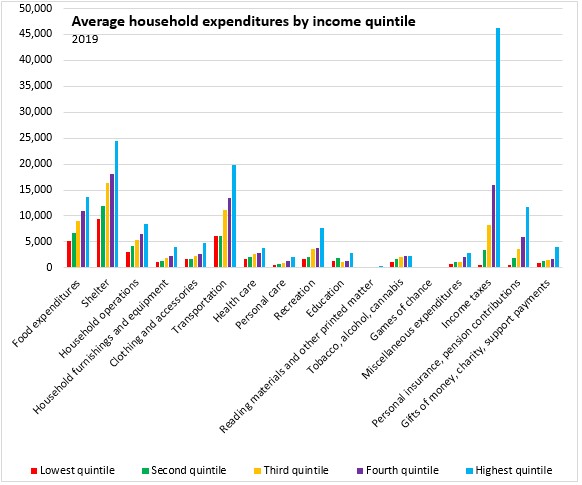
Dwelling characteristics and equipment
In addition to expenditure information, the Survey of Household spending also collects information on Canadians' dwellings and the equipment and services they have.
The 2019 Survey of Household Spending found that 65.5% of Nova Scotians lived in a single-detached dwelling while a further 23.7% lived in an apartment style dwelling.
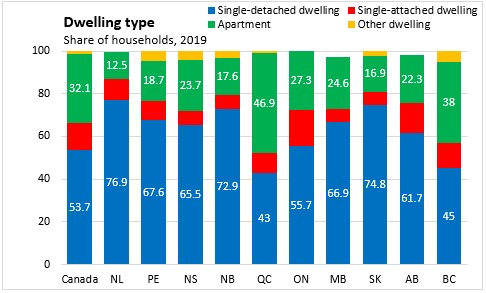
Just under 70% of Nova Scotian households owned their dwelling while 30.2% were renters. The same portion of Nova Scotia households (34.9%) had mortgages on their owned dwelling as the share that owned their dwelling without a mortgage.
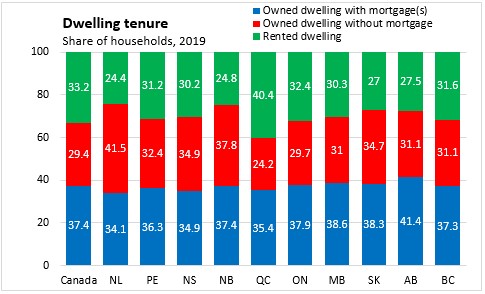
Landline telephone service was less common than households with a cellphone. In total, 99% of Nova Scotia households have a telephone of some type.
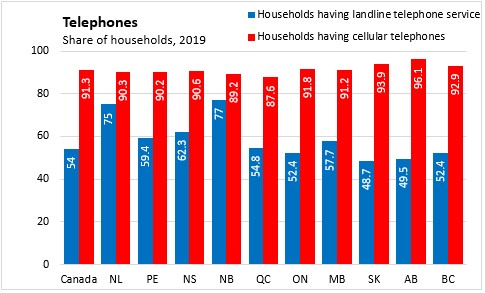
Just under half (49.8%) of Nova Scotia households had cable television in 2019, though a further 21.5% received television service through phone or satellite.
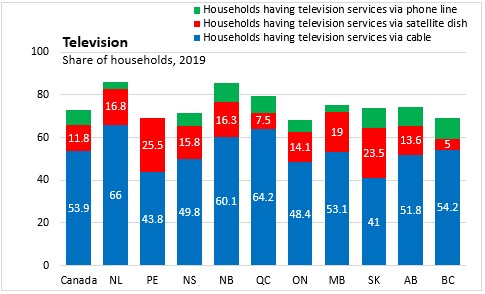
In 2019, 89.4% of Nova Scotia households had internet access. Cable (43.4% of households) and high-speed telephone service (26.2%) were the most common forms of internet access in Nova Scotia. Internet access was available at 91% of Canada's households.
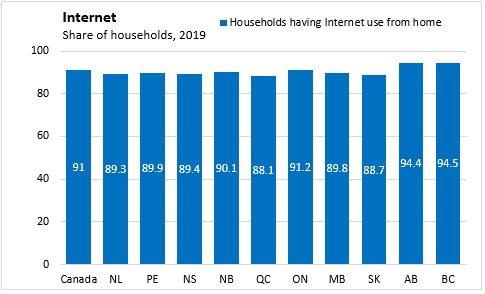
Across Canada, 83.4% of households owned, leased or otherwise operated a vehicle in 2019 including 78.2% who owned a vehicle. The share of Nova Scotia households with a vehicle was higher (88.3%), with 82.6% owning a vehicle. The share of Nova Scotia households that owned 2 or more vehicles was 40.8%, which was above the national average (38.9%).
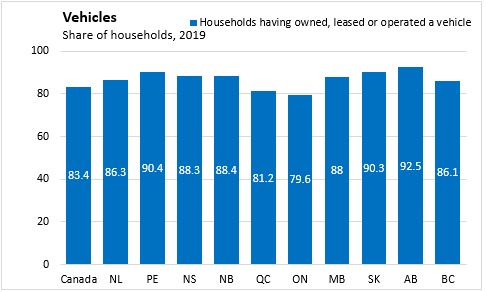
Source: Statistics Canada. Table 11-10-0222-01 Household spending, Canada, regions and provinces; Table 11-10-0223-01 Household spending by household income quintile, Canada, regions and provinces; Table 11-10-0228-01 Dwelling characteristics and household equipment at time of interview, Canada, regions and provinces
<--- Return to Archive